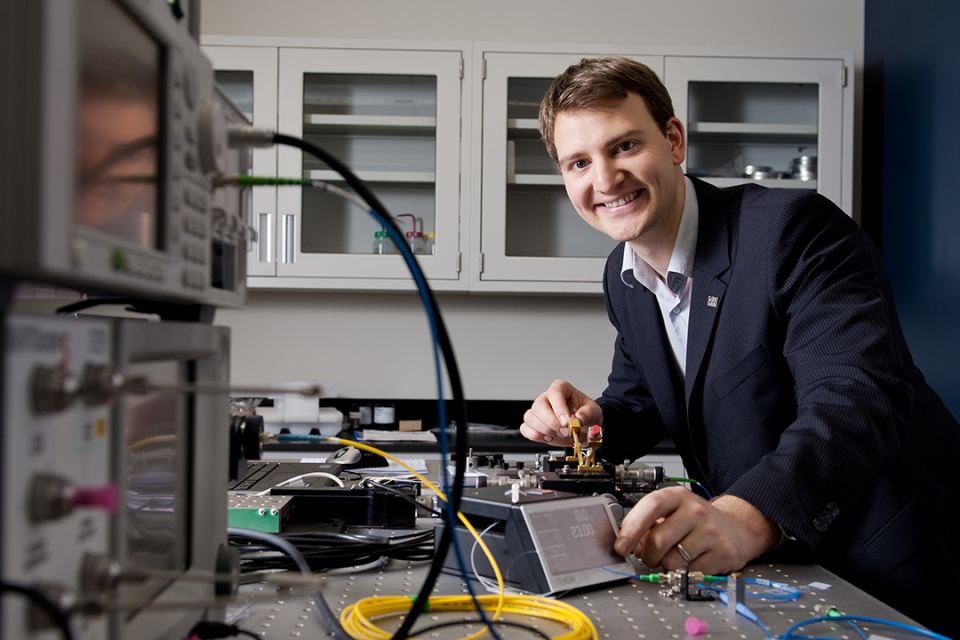"The computer of the future will be based on light rather than electronics, and it’s projected to be 1,000 times faster than current computers and significantly more energy efficient," claims Professor Volker Sorger of the Department of Electrical and Computer Engineering. “And our research at SEAS will help create this technology." Current computing technologies work with electricity, which limits the speed of the computer and leaves it vulnerable to losing power. However, researchers such as Sorger hope to plumb the study of photonics—which is optics integrated on a circuit, he explains—to create the nanoscale chips necessary to develop photonic computing.
"Physics says we cannot make photonics on the same scale as Intel makes its chips," says Sorger. "My research is addressing this shortcoming. We already have demonstrated that we can create devices at the necessary scale, a few billionths of a meter, and we'll use the clean room in the new Science and Engineering Hall’s nanofabrication facility to achieve this. That's why I’m very excited about the clean room."
Sorger has already had some success in his field. As a doctoral student, he was part of the UC Berkeley team that created the world's smallest laser, and he is continuing that approach here at SEAS. Sorger believes that the approach he and his SEAS research team use will prove to be a very effective mix of research and development.
He explains, "We are quite unique in that we’re rightly aiming to be at the forefront of research in the photonics field, but not 20 to 50 years out in terms of application. Instead, we're looking at the next five to eight years, where we actually see a real path for innovations and entrepreneurship. In fact, I was recently elected to lead the first U.S. effort to develop a roadmap on photonics computing."
Beyond photonics computing, Sorger's research also has potential applications for the development of highly efficient solar cells, chemical or environmental sensors, and biophotonics that are optically triggered (think of a "smart" contact lens).
Although his research targets mid-term commercialization opportunities, Sorger is motivated by the long-term outlook. "Photonics is a key technology for the twenty-first century," he says, referencing the National Research Council’s “Harnessing Light 2.0” report, which predicts that those who secure this technology now will be the new dominant players in the IT and medical industries, among other industries. “I believe that those who invest in photonics R&D now will be the big winners for the next 100 years,” concludes Sorger. “My group aims to secure key patents for GW and the U.S. We’re pushing this frontier beyond classical device limits and collaborating with companies for an accelerated time-to-market."


